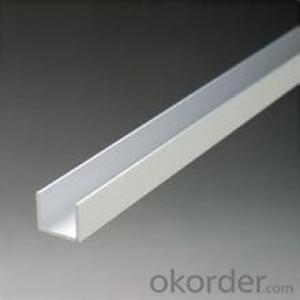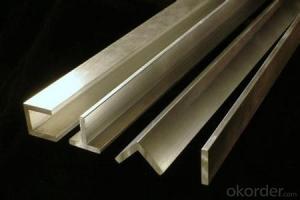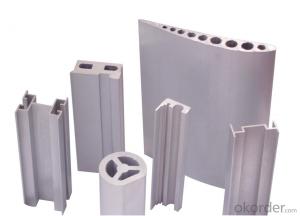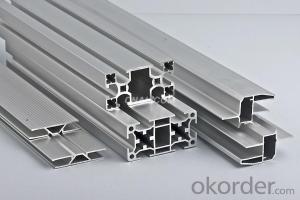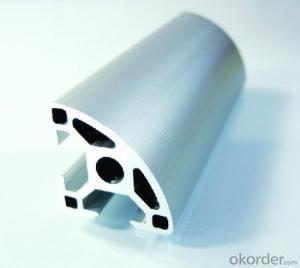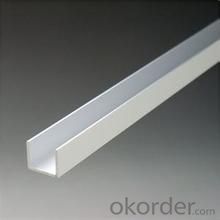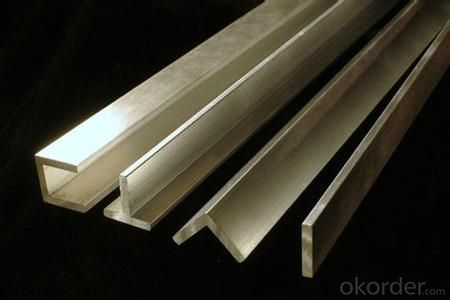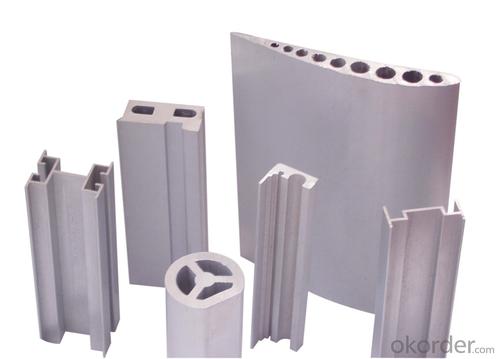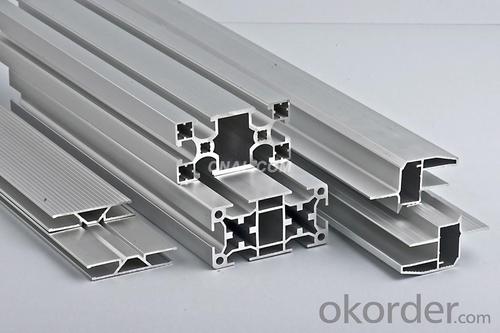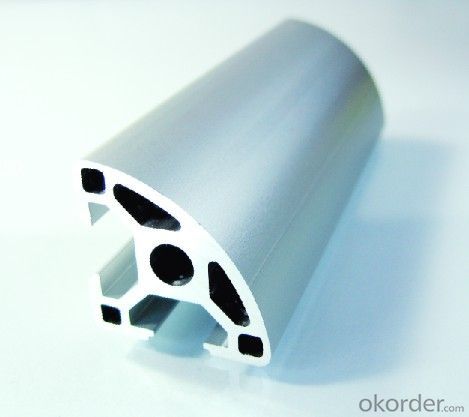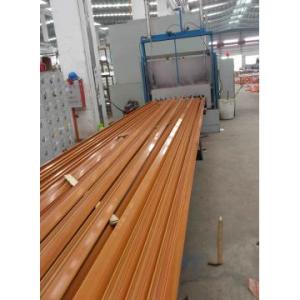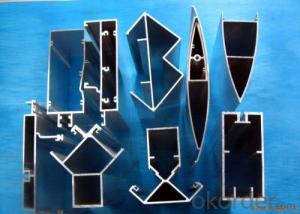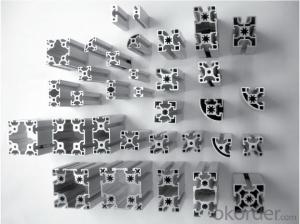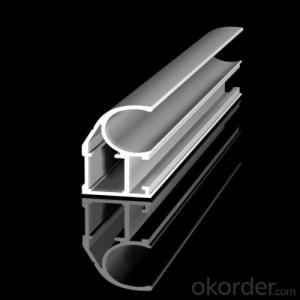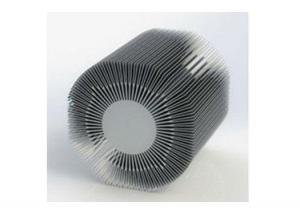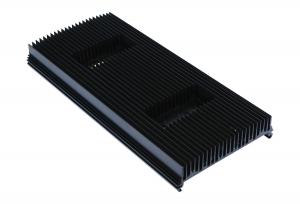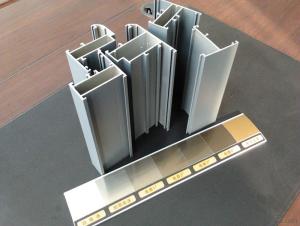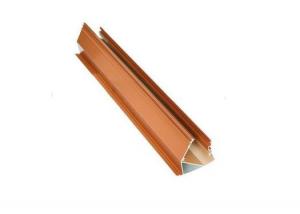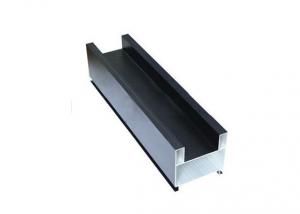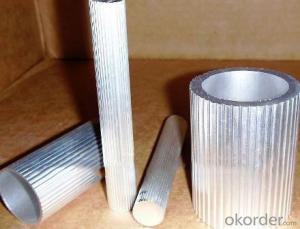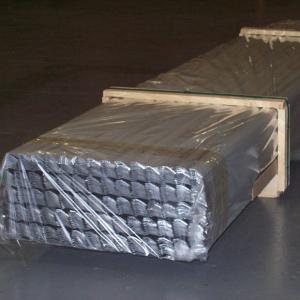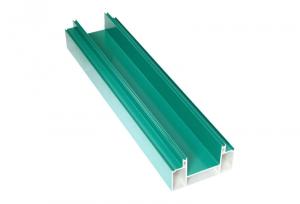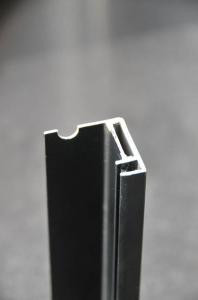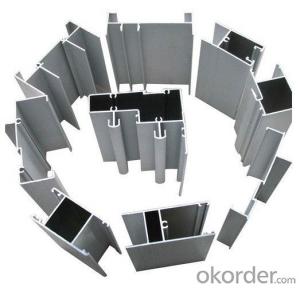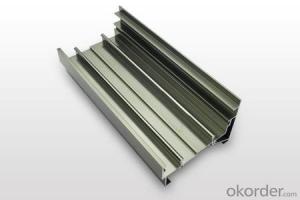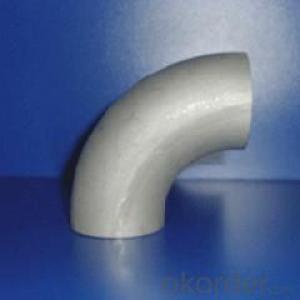Aluminum Profiles and Accessories - Good-Quality Industrial Aluminium Profile
OKorder Service Pledge
OKorder Financial Service
You Might Also Like
Aluminium is a relatively soft, durable, lightweight, ductileand malleablemetalwith appearance ranging from silvery to dull gray, depending on the surfaceroughness. It is nonmagnetic and does not easily ignite. A fresh film ofaluminium serves as a good reflector (approximately 92%) of visible lightand an excellent reflector (as much as 98%) of medium and far infraredradiation. The yield strength of pure aluminium is 7–11 MPa,while aluminium alloys have yield strengths ranging from200 MPa to 600 MPa. Aluminium has about one-third the densityand stiffness of steel. It is easily machined,cast, drawn and extruded.
Features:
Material | Alloy 6063,6061,6005or according to customer’s choice |
Temper | T3, T4, T5, T6 |
Surface | Anodize, electrophoresis, powder coating, PVDF coating, wood grain painting, matted, etc. |
Length | Coating 6.5 meters, Anodizing 6.5 meters, Mill finish 5 meters |
Application | Industrial, electrical equipment(TV set, air conditioner, refrigerator, computer), decoration,construction, transportation |
Custom Made | We can package following with customer's request. |
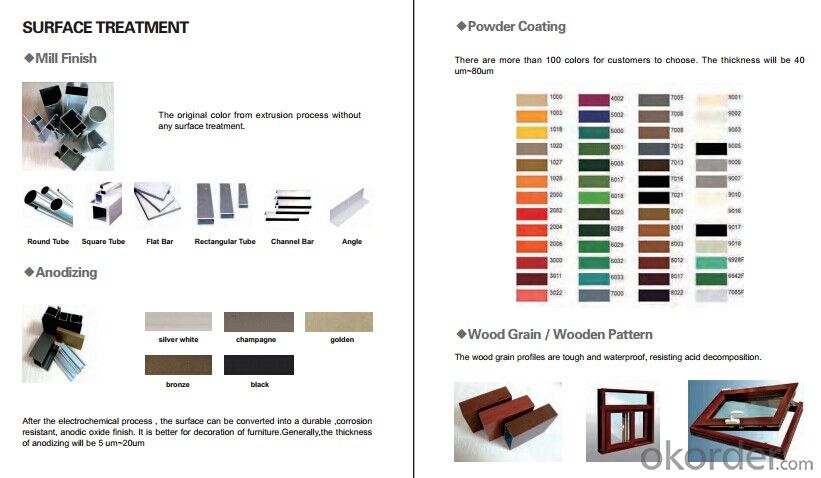
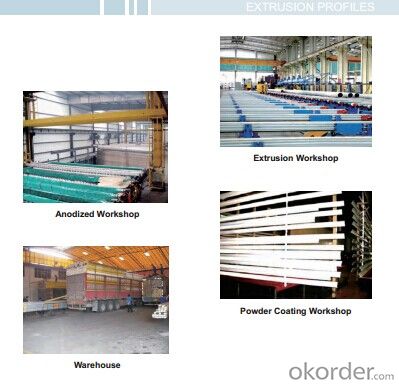
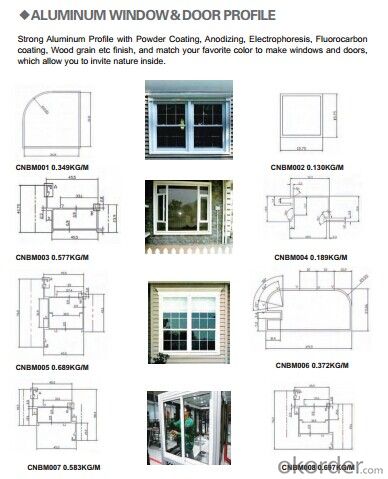
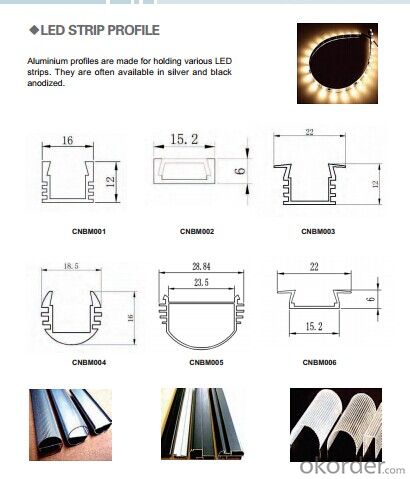
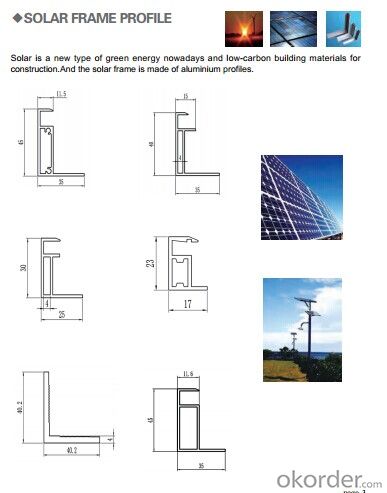
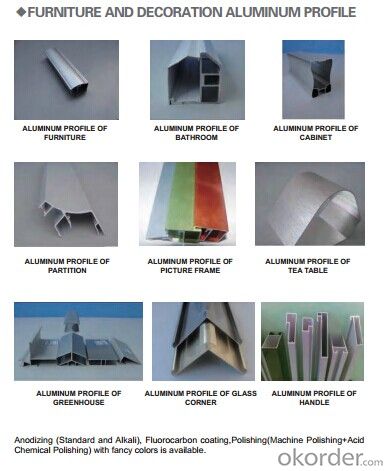
- Q: A curtain wall predecessors?For example, under the transverse frame section, with 6m specifications, why should the material processing and minus 50mm? Insert plate, plate to cut 100mm head? What is the law?
- The column beam rod in the visual profile factory when surface treatment to hang up or put the spraying profile in oxidation tank, in sections at each end of the play of a hole, so that the hook, in the cutting process, in order to avoid the holes will be seen after the installation and so on when will the cutting part of the section cut ends, this is to cause less 50mm. As you said the core insert to reduce 100mm plate plate, this is because the length of processing of these parts is relatively small, some ten centimeters in length, the process if you use a single head saw or double saw large mechanical cutting, base metal processing machinery in a relatively short time finally can not be cut, that is to say the last 100mm~150mm machine cannot continue cutting, it is useless.
- Q: Can aluminum profiles be used for greenhouse construction?
- Indeed, greenhouse construction can make use of aluminum profiles. The durability, lightweight characteristics, and corrosion resistance of aluminum make it a favored selection for greenhouse frames. Moreover, aluminum proves to be easily manageable, enabling flexibility in design and construction. The utilization of aluminum profiles yields a robust and steady structure capable of enduring severe weather conditions and providing enduring support for greenhouse coverings. Furthermore, aluminum frames necessitate minimal upkeep and possess a lengthier lifespan in comparison to alternative materials, rendering them a cost-efficient choice for greenhouse construction.
- Q: This question asks for methods to guarantee the high quality of aluminum profiles used in a construction project.
- <p>To ensure high-quality aluminum profiles for your building project, start by selecting profiles from reputable manufacturers known for quality. Check for certifications such as ISO 9001 for quality management systems. Inspect the profiles for uniformity in thickness and color, and ensure they are free from defects like dents or scratches. Request third-party test reports to verify the strength and durability of the profiles. Additionally, consider the chemical composition and alloy type to ensure they meet the required specifications for your project. Always procure from suppliers who offer warranties and after-sales support.</p>
- Q: This question asks about the various types of surface treatments or finishes that can be applied to aluminum profiles.
- <p>Aluminum profiles can be coated with different types of finishes to enhance their appearance, durability, and resistance to corrosion. Some common types of coatings include: 1. Anodizing, which creates a protective oxide layer on the surface. 2. Powder coating, a durable and colorful finish applied through an electrostatic process. 3. Electrophoretic coating, a method that uses electric current to apply a paint-like coating. 4. PVDF coating, a high-performance finish with excellent weather resistance. 5. Thermal spraying, which applies a coating through a high-velocity flame. 6. Vacuum coating, a process that deposits thin layers of material in a vacuum chamber. Each type of coating has specific properties and applications, making them suitable for different environments and uses.</p>
- Q: Can aluminum profiles be used in the construction of retail displays?
- Yes, retail displays can utilize aluminum profiles in their construction. Aluminum is a versatile and lightweight material that finds common application in various industries, such as construction and retail. It provides several benefits for retail displays, including durability, resistance to corrosion, and ease of customization. Aluminum profiles can be effortlessly shaped and fabricated to create diverse types of retail displays like shelving units, display stands, signage frames, and product showcases. These profiles can be extruded into different shapes and sizes, enabling flexibility in design and functionality. Moreover, aluminum profiles can undergo various surface treatments, such as anodizing or powder coating, to enhance their appearance and offer a protective layer against scratches and wear. This ensures that retail displays can maintain their aesthetic appeal and withstand the demands of a retail setting. Furthermore, aluminum is an eco-friendly material due to its high recyclability, making it an environmentally conscious choice for retail displays. It can be easily recycled without losing its properties, thus reducing the environmental impact of the construction and retail industries. To summarize, aluminum profiles are a practical and appropriate option for constructing retail displays. They provide durability, versatility, and customization possibilities while being lightweight and environmentally friendly.
- Q: Is it possible to tailor aluminum profiles to fulfill particular design and aesthetic needs?
- <p>Yes, aluminum profiles can be customized to meet specific aesthetic requirements. Manufacturers offer a variety of finishes, colors, and surface treatments to enhance the visual appeal of aluminum profiles. Additionally, the profiles can be cut, bent, and shaped to fit unique design specifications. This customization allows for a high degree of flexibility in creating structures and designs that are both functional and visually appealing, making aluminum profiles suitable for a wide range of applications from architectural to industrial design.</p>
- Q: Can aluminum profiles be used in the production of industrial machinery?
- Indeed, the utilization of aluminum profiles is plausible in the manufacturing of industrial machinery. These profiles possess qualities such as being lightweight, resistant to corrosion, and boasting a commendable strength-to-weight ratio. Consequently, they are deemed appropriate for a multitude of applications within the industrial machinery domain. The profiles can be employed to fabricate structural frames, housings, support brackets, and various other components integral to machinery. Furthermore, the malleability of aluminum profiles enables their facile extrusion into intricate shapes, thereby enabling customization and enhancing design versatility. The integration of aluminum profiles in industrial machinery contributes to the reduction of equipment weight, augmentation of energy efficiency, and overall enhancement of performance.
- Q: This question asks about the various types of aluminum profiles that are utilized in flooring systems, seeking to understand their specific applications and characteristics.
- <p>Aluminum profiles for flooring systems are designed for specific purposes and come in various types, including: 1. T-profiles, which are used as support beams for raised access floors; 2. L-profiles, often used for edge trims and transitions; 3. H-profiles, serving as main beams in the flooring structure; 4. U-channels, used for cover strips and edge protection; 5. C-profiles, which can be used for cable management within the floor void; 6. Z-profiles, suitable for joint covers and transitions. These profiles are chosen based on the load-bearing requirements, aesthetic considerations, and specific structural needs of the flooring system.</p>
- Q: Are aluminum profiles suitable for use in exterior wall insulation systems?
- <p>Yes, aluminum profiles can be used for exterior wall insulation systems. They are known for their durability, resistance to corrosion, and ability to withstand various weather conditions. Aluminum profiles provide a strong structural framework that can support insulation materials effectively. They are also lightweight, which makes them easy to handle and install. Additionally, aluminum profiles can be anodized or coated to enhance their resistance to environmental factors, making them a popular choice for exterior insulation systems.</p>
- Q: What are the different installation methods for aluminum profiles?
- Aluminum profiles can be installed using various methods, depending on the specific application and requirements. One common method is the use of screws to attach the profiles to the desired surface. This provides a secure and stable connection, making it suitable for various applications. Pre-drilled holes in the profiles facilitate this process. In some cases, aluminum profiles are welded together to create a strong and seamless joint. This method is commonly used in structural applications where high strength and rigidity are required. However, it requires specialized equipment and expertise. Another option is bolted installation, which involves using bolts and nuts to connect the profiles. This method offers flexibility as it allows for easy disassembly and reassembly if needed. It is commonly used in applications where frequent adjustments or modifications are required. Adhesive installation is another method that uses specialized adhesives or bonding agents to attach the profiles to the desired surface. This method is particularly useful when a seamless and aesthetically pleasing finish is desired, as it eliminates the need for visible screws or fasteners. It is commonly used in interior design, signage, and display systems. Clamping is a non-permanent method for installing aluminum profiles. Clamps or brackets are used to secure the profiles in place, allowing for easy adjustment or removal. This method is commonly used in applications such as exhibition booths, temporary structures, or modular systems. It is important to consider the specific requirements of the project and consult with professionals or manufacturers to determine the most suitable installation method for aluminum profiles. Factors such as load-bearing capacity, aesthetics, ease of installation, and maintenance should be taken into account to ensure a successful installation.
Send your message to us
Aluminum Profiles and Accessories - Good-Quality Industrial Aluminium Profile
OKorder Service Pledge
OKorder Financial Service
Similar products
Hot products
Hot Searches
Related keywords
